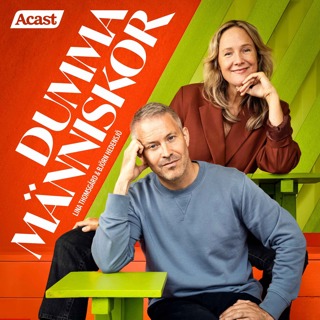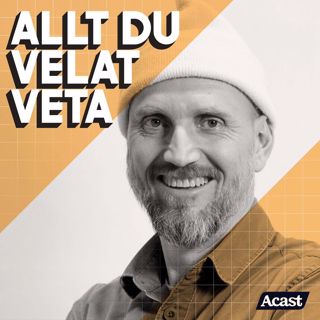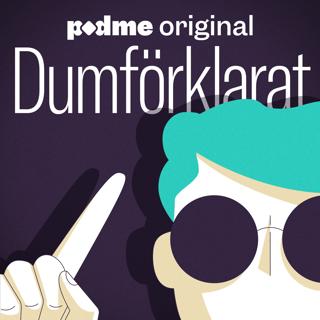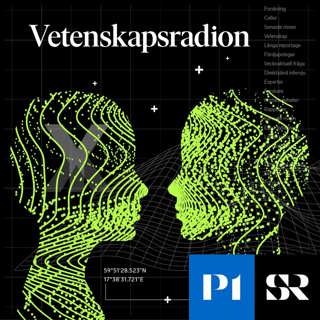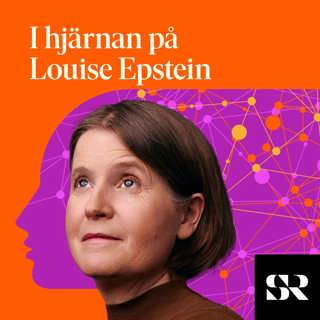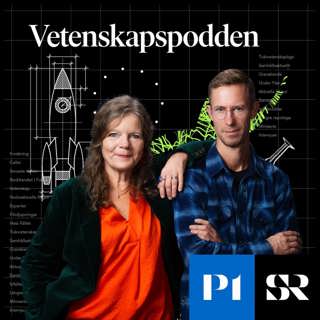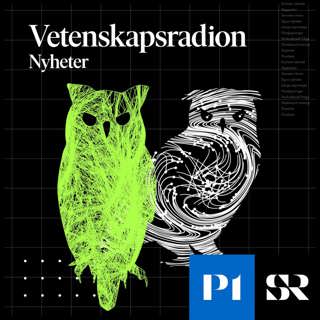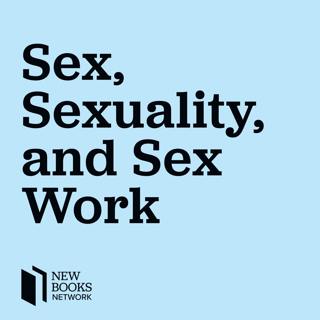
Cymene Howe, “Intimate Activism: The Struggle for Sexual Rights in Postrevolutionary Nicaragua” (Duke UP, 2013)
With Intimate Activism: The Struggle for Sexual Rights in Postrevolutionary Nicaragua (Duke University Press, 2013), Cymene Howe offers an ethnography of activism. Woven into Nicaragua’s political history of revolution and U.S. intervention, the struggle for sexual rights there takes place on three stages: in intimate settings of lesbian discussion groups, in the public sphere marked by demonstrations, press conferences and celebrations, and in visual and print media. Howe’s informants (activists, advocates, students, educators, television actors, members of Nicaragua’s queer community) illustrate the transformations and continuities in the culture of sexuality in Nicaragua. Learn more about your ad choices. Visit megaphone.fm/adchoices
10 Juni 20141h 11min

Clare Haru Crowston, “Credit, Fashion, Sex: Economies of Regard in Old Regime France”
Anyone who’s been paying attention to the flurry around the French economist Thomas Piketty’s 2013 Capitalism in the Twenty-first Century (Le Capital au XXIe siecle) knows how a la mode the economy is at the moment. Contemporary ideas and debates about capital, debt, and austerity are only part of what makes Clare Crowston‘s Credit, Fashion, Sex: Economies of Regard in Old Regime France (Duke University Press, 2013) such an interesting read in 2014. In this detailed study of the varied economic, political, social, and cultural meanings and practices of “credit” from the seventeenth through the eighteenth century, Crowston draws our attention to mutually constitutive worlds and systems of circulation. At once a genealogy of credit; an economic, social, and cultural history of fashion; and an examination of the roles of gender and desire in Old Regime France, Credit, Fashion, Sex makes an important contribution to our understanding of the origins of the French Revolution while respecting the historical integrity of the period that came before. In addition to its conceptual and historiographical insights regarding credit and the complexities of Old Regime society, the book offers readers a fascinating and extensively-researched analysis of the everyday practices and systems of exchange that operated “behind the scenes” of more familiar stories. For example, the book illuminates the mythology and critiques surrounding Marie Antoinette, the queen who embodied like no one else the intersection between ideas about credit, fashion, and sexuality in the era before 1789. At the same time, Crowston gives us a glimpse of other figures and social actors who played vital roles in the society of the period: Rose Bertin, the queen’s dressmaker; the fashion merchants who made so much luxury and refinement possible, as well as all those wives not married to Louis XVI who traded on/in their husbands’ credit, participating in multiple economic and cultural systems of circulation and power. Learn more about your ad choices. Visit megaphone.fm/adchoices
29 Maj 20141h

Denise Brennan, “Life Interrupted: Trafficking into Forced Labor in the United States” (Duke UP, 2014)
Denise Brennan‘s second book, Life Interrupted: Trafficking into Forced Labor in the United States (Duke University Press, 2014), examines how individuals who were trafficked into forced labor go about rebuilding their lives afterward. Through her ethnography of lived experience and her analysis of immigration policy, Brennan shows that trafficking and forced labor are common byproducts of our capitalist system that relies on cheap and unregulated labor. Migration patterns are gendered, and the persons whose experiences shape this book — Maria, Elsa, and many others — are mostly women in the caregiving and sex industries. Brennan argues that U.S. policy has used anti-trafficking policy to forward a separate agenda of ending prostitution and other sex work, thereby distorting protections for female and male trafficking victims in all labor industries, and drastically limiting the number of T visas allocated since 2000. The book is one of scholarly activism: as an anthropologist, Denise Brennan combines research and advocacy to improve the lives of victims and to modify the realities of trafficking and forced labor. Learn more about your ad choices. Visit megaphone.fm/adchoices
20 Maj 20141h 6min

Michael Salter, “Organised Sexual Abuse” (Routledge, 2012)
Sometimes it’s hard to imagine how certain types of violence can occur, and organized multi-perpetrator abuse certainly fits into this category. Ritual abuse, sadistic abuse and pedophilia rings are often things we see in episodes of “Law and Order,” without having to think of the reality of the victims that actually experience this type of cruelty. In Organised Sexual Abuse (Routledge, 2013), Michael Salter attempts to bring to light this often-hidden and seldom-believed type of crime. He describes his own experience being the caretaker of someone who was continuously abused and harassed well into adulthood, including his attempts to reach out to law enforcement and hospital workers, most of whom had trouble believing that this kind of abuse was actually taking place. Salter also talks about the connection between views of hypermasculinity and abuse, and the ways in which violence is often a “collective masculine performance.” Through in-depth qualitative research, Salter takes us, he proposes, into a horrifying journey of a reality that we cannot afford to ignore. Learn more about your ad choices. Visit megaphone.fm/adchoices
7 Maj 201449min

Sa’diyya Shaikh, “Sufi Narratives of Intimacy: Ibn Arabi, Gender and Sexuality” (University of North Carolina Press, 2012)
Many Muslim debates regarding women are solely situated in legal or political frameworks. For example, we often find this tendency in conversations about women’s leadership in the mosque or the politics of veiling. Sa’diyya Shaikh, Professor of Religious Studies at the University of Cape Town, provides a unique approach to these discussions that puts feminist hermeneutics in dialogue with the thought of the prolific Muhyi al-Din ibn al-‘Arabi (1165-1240). In Sufi Narratives of Intimacy: Ibn Arabi, Gender and Sexuality (University of North Carolina Press, 2012) she explores contestations over embodiment and gender, spirituality and leadership, sexuality and power in order to rethink patriarchal epistemologies in contemporary Muslim discourses. She argues that contesting positions on gender in these debates are underpinned by certain assumptions about human nature, its gendering, and existence. Shaikh outlines the social and ritual consequences of spiritual (in)equality and initiates reflections on Islamic notions of the central category “human being.” Shaikh leads us through Ibn ‘Arabi’s dynamic anthropology, ontology, and cosmology and links abstract philosophical concepts with concrete daily relationships between men and women. In our conversation we discussed Islamic feminism, apophatic unsayings and hermeneutic of subversions, Ibn ‘Arabi’s interpersonal relationships with women, parallels between the macrocosm and microcosm, Muslim exegesis, notions of creation, interpretations of Adam and Eve, Jesus’ birth from the Virgin Mary, and masculine and feminine in Islam. Learn more about your ad choices. Visit megaphone.fm/adchoices
29 Apr 201455min

Julie Berebitsky, “Sex and the Office: A History of Gender, Power and Desire” (Yale University Press, 2012)
How to research the history of sexual harassment in the office, when the term sexual harassment was only invented in 1975 and it was long tabou to even use the word sex in conversation? Using an array of rich sources — from Treasury Department archives to trial records, congressional investigation files to films and novels, popular weeklies and dailies to postcards, advertisements to confession magazines, private papers to employment advice guides — Julie Berebitsky takes the reader on a discovery of sexuality in the white collar-office from the Civil War to the present day. Sex and the Office: A History of Gender, Power and Desire (Yale University Press, 2012) analyzes sexual relations, non-consensual and consensual, among co-workers, arguing that the 19th-century ideal of the passionless woman gave way by World War One to an ideal of feminine attractiveness, one that was later transformed by Helen Gurley Brown in the 1960s into a professional strategy for its time. At the same time, feminist groups and the secretarial labor movement coalesced to fight back against decades of discrimination and sexual violence in the office against women workers. Berebitsky concludes her book with an analysis of the Anita Hill-Clarence Thomas case, which brought the issue of sexual harassment into the living rooms of Americans. This case, and the Monica Lewinsky-Bill Clinton affair, demonstrate that there is both continuity and change in American attitudes towards sex at the office. Learn more about your ad choices. Visit megaphone.fm/adchoices
11 Dec 20131h 4min

Elizabeth H. Pleck, “Not Just Roommates: Cohabitation after the Sexual Revolution” (Chicago UP, 2012)
Most countries, believing that married people form a kind of demographic and political bedrock, promote marriage (and, of course, child-having within wedlock). Nonetheless, many couples choose to live together before marriage and many choose not to get married at all. Their numbers are increasing all over the developed world at a remarkable rate. Co-habitation is now more than “shacking up”; it’s a common life-choice. In Not Just Roommates: Cohabitation after the Sexual Revolution (Chicago UP, 2012), Elizabeth H. Pleck examines the rise of cohabitation and asks whether cohabiters have not become second class citizens. She says they have and has some suggestions about how to give them the same opportunities those who married have. Learn more about your ad choices. Visit megaphone.fm/adchoices
31 Maj 201347min

Helen Longino, “Studying Human Behavior: How Scientists Investigate Aggression and Sexuality” (University of Chicago Press, 2013)
What explains human behavior? It is standard to consider answers from the perspective of a dichotomy between nature and nurture, with most researchers today in agreement that it is both. For Helen Longino, Clarence Irving Lewis Professor of Philosophy at Stanford University, the “both” answer misses the fact that the nature/nurture divide is itself problematic. In her groundbreaking book, Studying Human Behavior: How Scientists Investigate Aggression and Sexuality (University of Chicago Press) Longino looks closely at a variety of scientific approaches to the study of human aggression and sexuality to argue that there is no one right way to divide nature from nurture within the scientific approaches to the study of behavior, and that the nature/nurture dichotomy reinforces and reflects an undue emphasis on explanations that focus on the dispositions of individuals rather than those that look at patterns of frequency and distribution of behavior within populations. She reveals the distinct and incompatible ways these different approaches define the factors that explain behavior, how these different explanatory approaches are related, and how the bias towards particular types of explanation is reflected in the way the scientific findings are publicly disseminated. Learn more about your ad choices. Visit megaphone.fm/adchoices
15 Maj 20131h 4min


